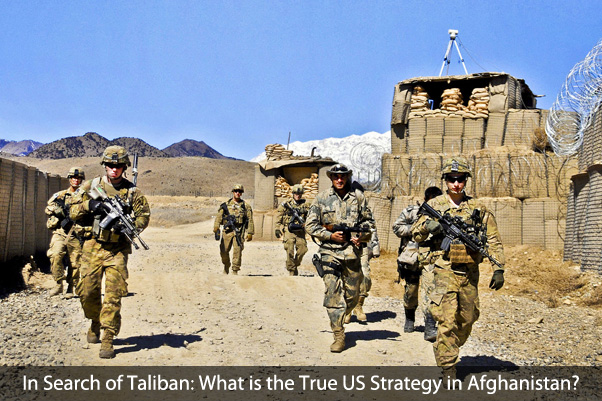AFGHANISTAN FELL UNDER Soviet control from 1978 until 1989 when the Communists withdrew. From 1978 onward the Soviet Union backed a secular Socialist government known as the Democratic Republic of Afghanistan (DRA). In 1979 the DRA requested the Soviet Union to send forces into the country to assist them against indigenous forces headed by warlords known as the mujahideen. For ten years thereafter the Soviets engaged in war against these Islamic jihadists. During this time, radical Sunni Islamists from other countries, including Al Qaeda and its leader, leader Osama Ben Laden (Saudi Arabia), came to the assistance of the Mujahideen in which effort they were aided by the United States.
Following the importation of Osama Ben Laden, economic and military assistance as well as radical Islamic forces from around the globe began to funnel into Afghanistan with significant support coming from Saudi Arabia and Pakistan. Although the Soviets continued to support the DRA after their withdrawal in 1989, much of Afghanistan fell to the US backed Mujahideen who overthrew the DRA’s last president, Mohammad Najibullah in 1992. Thereafter, the Mujahideen fought among themselves and eventually morphed into what is now known as the Taliban, the force that sheltered Al Qaeda and the radical Sunni Muslims that planned terrorist attacks from their safe abode inside Afghanistan, including what many believe to be the planned attack against the United States known as 9-11.
Triggered by the 9-11 attacks of 2001, the United States has been militarily involved in Afghanistan against the Taliban for seventeen years, the longest war in American History. Yet according to Senator John McCain, not only is victory elusive, the US is losing the war:
“We have no strategy. And we are losing. When you’re not winning, you’re losing. And the ANA, the Afghan National Army, is taking unacceptable losses” (CBS News July 2017).
“We will fight to win. From now on, victory will have a clear definition: Attacking our enemies, obliterating ISIS, crushing al Qaeda, preventing the Taliban from taking over Afghanistan, and stopping mass terror attacks against America before they emerge” (CNN).
Although the Pentagon had previously (June, 2017) announced a deployment of up to 3,900 new troops to Afghanistan, that announcement cannot be taken as authoritative since the president announced in his August address that the numbers would remain unspecified to maintain the element of surprise necessary to conduct a successful campaign:
“America’s enemies must never know our plans or believe they can wait us out” (PBS News).
l
Will the President be Able to Institute a New Foreign Policy?
During his National Address (as well as during his presidential campaign), President Trump insisted that under his leadership the United States is embarking on a new foreign policy path: The US, he said, will no longer be involved in wars for the sake of nation building, but rather for peace and stability. Echoing the president, Secretary of State Tillerson specified that the United States would advance “peace talks” with the Taliban and allied terrorists without “preconditions.” In other words, negotiations, so it seems, should be open to input from all concerned parties without any foreign agenda to be imposed.
Unfortunately, the president’s policy involves overt threats to neighboring Pakistan, a nation that has harbored Taliban insurgents seeking asylum by crossing the mountainous Afghan border into its equally mountainous regions, which have historically served as an incubator for terrorists threatening Afghanistan. Rather than leaving this adroit diplomatic maneuver to the Chinese (deeply desirous for peace in the region) who have recently courted economic-political favor with the Pakistani government via the New Silk Road Initiative (an economic boon for Pakistan), the president’s American bravado got the best of him thereby forcing him into a foreign policy faux pas, which will need correcting. If not corrected, relationships with Pakistan will continue to deteriorate driving them into further Chinese and Russian alliance.
Mr. Trump would do well to adhere to his campaign plan to cooperate with Russia and China to end terrorism rather than trying to do it solo or with NATO but without Russia and China or by flying in the face of Sino-Russo objections. Unfortunately, it behooves Neocon warhawks and their liberal allies in the United States to continue painting Russia as the bad guy when, in fact, a cooperative venture would do much to stabilize the war-torn region and advance global peace.
The world is groping for peace and the United States (apparently contrary to the wishes of its elected president) continues to make maneuvers that promise more and greater conflict. Recently (July 13, 2017), Frank-Walter Steinmeier, the President of Germany, visited German troops stationed in Afghanistan to whom he communicated Germany’s continued resolve to maintain its military presence in Afghanistan alongside the United States and other NATO allies; Steinmeier however, is looking for peace. Like President Trump as well as Russian and Chinese diplomats (and political leaders throughout Eastern Europe and elsewhere), Steinmeier seems to think that future peace entails the respect of national sovereignty and the curtailing of globalism, nation building or any form of neo-colonialism.”
In Steinmeier’s words to the troops, “I came to” Afghanistan to “speak with President Ghani about the steps that are needed and can be taken toward a serious and credible peace process in Afghanistan. My message to him today was”:
“The future of this country is not primarily in the hands of Germany, NATO or international donors. It is first and foremost in the hands of the Government of Afghanistan, and it hinges on the government’s efforts to unite this divided country. None of this will be possible without the acceptance of a central government in Kabul, without a political settlement with the various ethnic and religious groups, including the Taliban. That is part of the reality which we, but above all political leaders in Afghanistan, have to recognise. Your presence here cannot take the place of a political settlement. Your presence can only create both time and space for a political settlement, one that Afghans themselves must both desire and work out. Nothing more – but also nothing less” (Der Bundesprasident)
“We paid attention to the lampoon of the American CNN television channel about alleged supplies of weapons to the Afghan Taliban by Russia.”
l
“It is hardly possible to seriously perceive video materials in which old small arms are demonstrated, the origin of which is impossible to establish. The weapons are not stamped by the manufacturer and serial numbers are defaced. In addition, the weapons shown are typical. As is known, such samples were produced not only in Russia, but also in other countries, including Eastern Europe, from where in the early 2000s, Americans massively imported them to Afghanistan.”
l
“Recently, the Taliban attacked the base of the Afghan National Security Forces in Helmand province, using American armored vehicles “Humvee”. What conclusion can be drawn based on this information using the logic of CNN?”
l
“As we have repeatedly stated, the accusations of a number of Western and some echoing Afghan mass media regarding alleged support from the Russian Federation by the militants of the Taliban movement are unfounded. To date, neither the Afghan authorities nor the command of the US and NATO contingents in the IRA have provided evidence that would confirm these speculations.
“There is a serious threat of Afghanistan turning into a safe haven for terrorists as, unfortunately, the hold of the Islamic State [referring to Daesh, a terrorist group banned in Russia] is not weakening.”
“During a US-supported (Afghan security) operation, aerial fires resulted in the deaths of the friendly Afghan forces who were gathered in a compound.”
NOTE:
Both the Taliban and Al Qaeda are radical Sunni Muslims committed to Jihad and theocratic government; both are opposed to the influence of Western culture and the secular governments put in place by Western leaders.
From 1996 to 2001, the Taliban enforced strict Sharia law over most of Afghanistan prior to the US invasion in 2001. The United States assisted the Taliban with Stinger missiles and an array of military supplies in the 1980s, when these terrorists were combatting the Soviet Union in Afghanistan.
During their 1996 to 2001 rule, the Taliban Mujahideen interfered with UN humanitarian shipments to famished men, women, and children, massacred Afghan civilians, scorched fertile land and destroyed thousands of homes. The Taliban was opposed by the Northern Alliance spearheaded by Russia, Iran, Turkey and India and then later used by the United States to defeat the Tsliban and install its own compliant government, a puppet state amenable to secular liberal interests.
The Taliban consists of militants drawn primarily from Afghanistan itself. It is an indigenous nationalistic movement in favor of an Islamic government and opposed to the Western backed secular state in Afghanistan.
The Taliban is therefore a legitimate stake-holder having a legitimate claim to some share in a future Afghani government.
Al-Qaeda, on the other hand, consists primarily of educated Arabs, a few Afghans and a healthy contingent of Egyptians. Al-Qaeda was formed by an Arab, Osama Bin Laden, to spread global Jihad against liberal forces supported by the United States in favor of its ally, Israel. The Taliban invited Ben laden to Afghanistan where they sheltered him as he planned terrorist attacks.







